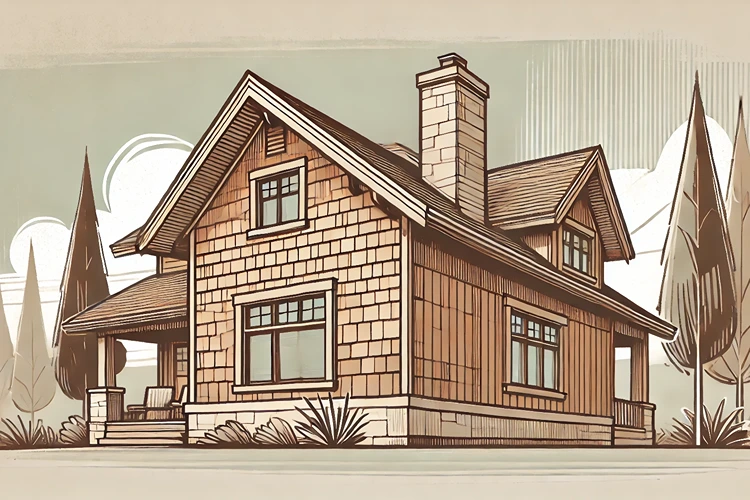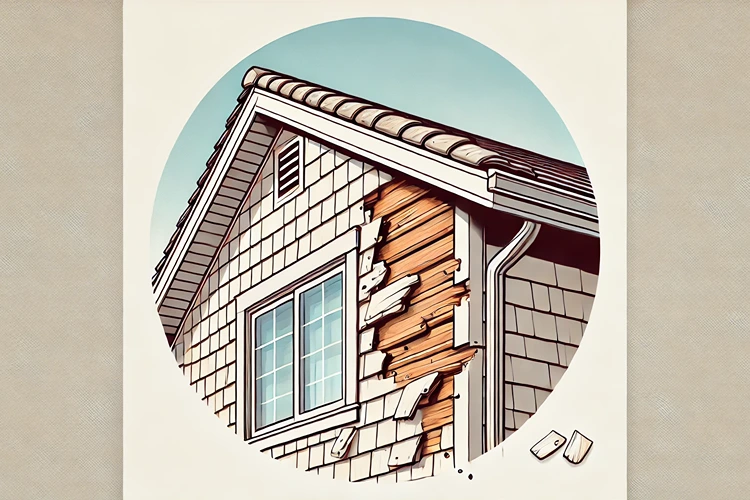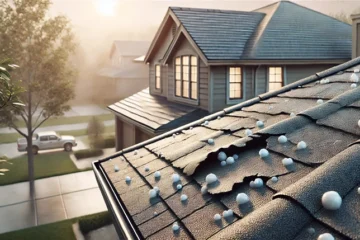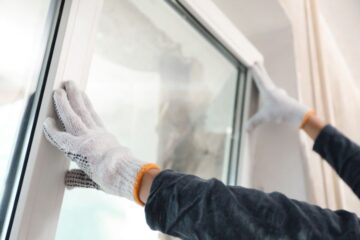Essential Tips for Maintaining and Fixing Cedar Shake Siding

Cedar shake siding offers a beautiful, rustic charm to homes, but it requires proper maintenance and care to keep it looking its best. Over time, weather conditions, pests, and natural wear can cause damage to cedar shake siding, leading to the need for repairs. This article provides essential tips for maintaining and fixing cedar shake siding, ensuring your home remains protected and aesthetically pleasing for years to come.
What is Cedar Shake Siding?
Cedar shake siding is made from natural cedar wood, cut into thick, uneven pieces that give homes a distinctive, textured appearance. It’s known for its durability and resistance to elements like wind, rain, and insects, making it a popular choice for homeowners who want a long-lasting and attractive exterior. However, like all natural materials, cedar shakes can deteriorate over time if not properly maintained.
Why is Regular Maintenance Important for Cedar Shake Siding?
Regular maintenance of cedar shake siding is crucial to preserving its longevity and appearance. Without proper care, cedar shakes can become susceptible to issues like rot, warping, and insect infestation. These problems not only affect the visual appeal of your home but can also compromise its structural integrity. By keeping up with routine maintenance, you can prevent costly repairs and extend the life of your siding.
Common Issues with Cedar Shake Siding
Understanding the common issues that affect cedar shake siding can help you stay ahead of potential problems. Some of the most frequent issues include:
- Rotting due to prolonged exposure to moisture
- Warping or curling from sun exposure and heat
- Insect damage, particularly from termites or carpenter ants
- Mold or mildew growth in damp, shaded areas
- Splitting or cracking due to aging or impact damage
Signs Your Cedar Shake Siding Needs Repair

It’s important to regularly inspect your cedar shake siding for signs of damage. Here are some key indicators that your siding may need repair:
- Visible cracks or splits in the shakes
- Discoloration or dark spots, indicating mold or mildew
- Loose or missing shakes
- Warped or curled edges
- Soft or spongy areas, which could signal rot
How to Maintain Cedar Shake Siding
Maintaining cedar shake siding requires a combination of regular cleaning, protective treatments, and prompt repairs. Here are some essential tips to keep your siding in top condition:
Cleaning Your Cedar Shake Siding
Regular cleaning is one of the most effective ways to maintain the appearance and durability of your cedar shake siding. Dirt, grime, and organic matter can accumulate on the surface, leading to mold and mildew growth. To clean your siding:
- Use a soft brush or a low-pressure power washer to remove dirt and debris.
- Mix a solution of mild detergent and water to scrub away stubborn stains.
- Avoid harsh chemicals that could damage the wood or strip away its natural oils.
- Rinse thoroughly with clean water to remove any soap residue.
Helpful Hint:
Consider cleaning your cedar shake siding at least once a year, preferably in the spring or fall, when the weather is mild. This will help prevent the buildup of debris and reduce the risk of mold or mildew growth.
Applying Protective Treatments
Applying protective treatments to your cedar shake siding can help preserve its natural beauty and extend its lifespan. There are several types of treatments you can use:
- Wood Preservatives: These treatments penetrate the wood to protect against rot, insects, and moisture damage.
- Water Repellents: These sealants create a barrier that prevents water from soaking into the wood, reducing the risk of rot.
- UV Inhibitors: These products protect the wood from sun damage, preventing fading and discoloration.
When applying these treatments, make sure to follow the manufacturer’s instructions and reapply as needed, typically every 3-5 years.
Protective Treatments for Cedar Shake Siding
| Treatment Type | Protection Offered | Application Frequency | Additional Notes |
|---|---|---|---|
| Wood Preservatives | Protects against rot, insects, and moisture damage | Every 3-5 years | Choose a product with both fungicide and insecticide for best results |
| Water Repellents | Prevents water absorption, reducing the risk of rot | Every 2-4 years | Ensure full coverage for maximum effectiveness |
| UV Inhibitors | Prevents sun damage, fading, and discoloration | Every 3-4 years | Reapply more frequently in areas with intense sun exposure |
Inspecting and Repairing Damage
Regular inspections are key to identifying and addressing damage to your cedar shake siding before it becomes a bigger problem. Here’s how to inspect and repair your siding:
- Inspect: Walk around your home and carefully examine each section of siding. Look for signs of damage, such as cracks, splits, or loose shakes.
- Repair: For minor damage, you can often repair the siding yourself. Replace any cracked or missing shakes, and fill small gaps with wood filler. For more extensive damage, consider hiring a professional to ensure the repairs are done correctly.
Helpful Hint:
To prevent further damage, address any issues with your cedar shake siding as soon as you notice them. Prompt repairs can save you time and money in the long run.
How to Fix Common Issues with Cedar Shake Siding
Even with regular maintenance, cedar shake siding can develop issues over time. Here are some common problems and how to fix them:
Fixing Rotting Cedar Shakes
Rot is one of the most serious problems that can affect cedar shake siding. If left untreated, rot can spread and weaken the structure of your home. To fix rotting cedar shakes:
- Remove the Rot: Use a chisel or saw to carefully remove the rotting wood. Be sure to cut out all affected areas to prevent the rot from spreading.
- Replace the Shake: Install a new cedar shake in the space where the rotted one was removed. Secure it with nails and make sure it aligns with the surrounding shakes.
- Seal the Area: Apply a water repellent or wood preservative to the new shake to protect it from future rot.
Remember to regularly inspect your siding for signs of rot and take action as soon as possible to prevent further damage.
Repairing Warped or Curled Shakes
Warped or curled cedar shakes can create gaps that allow moisture to penetrate your home, leading to further damage. To repair warped or curled shakes:
- Heat and Moisture: Sometimes, applying heat and moisture to the warped shake can help it return to its original shape. Use a heat gun or warm water to gently soften the wood, then press it back into place.
- Replace the Shake: If the warping is severe, it’s best to replace the affected shake. Carefully remove the damaged shake and install a new one in its place.
- Nail Down the Edges: Secure the edges of the new shake with nails to prevent future warping or curling.
To prevent warping, make sure your cedar shake siding is properly sealed and protected from excessive moisture.
Dealing with Insect Damage
Insects like termites and carpenter ants can cause significant damage to cedar shake siding if not addressed promptly. To deal with insect damage:
- Inspect for Infestations: Look for signs of insect activity, such as small holes in the wood, sawdust-like debris, or the presence of insects themselves.
- Remove and Replace: If you find insect-damaged shakes, remove them and replace them with new ones. Be sure to inspect the surrounding area for further damage.
- Treat the Area: Apply a wood preservative or insecticide to the affected area to prevent future infestations.
Stats:
According to a study by the National Pest Management Association, termites alone cause over $5 billion in property damage each year in the United States. Protecting your cedar shake siding from insects is essential to maintaining your home’s structural integrity.
Insect damage can be challenging to manage, so consider consulting with a pest control professional if the infestation is widespread.
Preventing Mold and Mildew
Mold and mildew can develop on cedar shake siding, especially in damp or shaded areas. To prevent mold and mildew:
- Ensure Proper Ventilation: Make sure your home has adequate ventilation to reduce moisture buildup.
- Clean Regularly: Remove any debris, dirt, or organic matter from your siding to prevent mold spores from taking hold.
- Apply a Mold-Resistant Treatment: Use a mold-resistant wood preservative to protect your siding from future mold growth.
If mold or mildew does appear, clean it off as soon as possible using a mild detergent and water. For stubborn mold, you may need to use a bleach solution, but be sure to rinse thoroughly to avoid damaging the wood.
FAQs
Wrapping Up
Maintaining and repairing cedar shake siding is essential to preserving the unique charm and durability that this natural material offers. By staying on top of regular maintenance, including cleaning, inspections, and protective treatments, you can significantly extend the lifespan of your siding and keep your home looking its best. Addressing issues like rot, warping, and insect damage early on will save you time and money in the long run. Whether you handle minor repairs yourself or seek professional help for more extensive work, taking care of your cedar shake siding ensures that your home remains a standout feature in your neighborhood for many years. Remember, the key to enjoying the full benefits of cedar shake siding is consistent upkeep and timely repairs.


